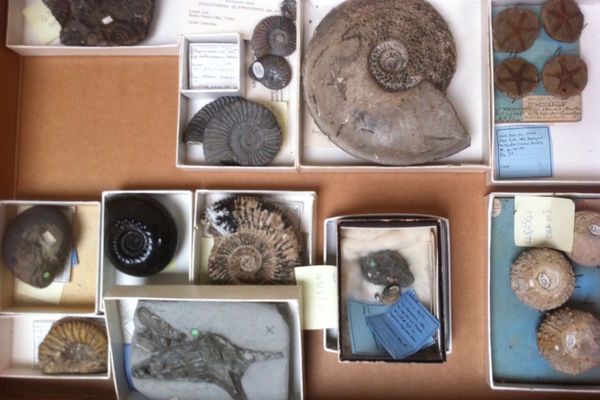Start a fossil collection
Start a small fossil collection by finding, identifying, cleaning, labeling, and displaying local fossils; learn safe collecting rules, record locations, and care for specimens.



Step-by-step guide to start a fossil collection
DIY FOSSILS | FOSSILS ACTIVITY FOR KIDS | HOW TO MAKE DINOSAUR FOSSILS | SALT DOUGH FOSSILS |
Step 1
Gather all the materials listed so you are ready to start your fossil hunt.
Step 2
Ask an adult to explain safe collecting rules and to give permission for the place you will search.
Step 3
With the adult, choose a nearby spot where fossil collecting is allowed.
Step 4
Write today’s date and the place you will search in your notebook to begin your record.
Step 5
Walk slowly and scan the ground and exposed rocks for shapes or textures that look like fossils.
Step 6
Gently pick up any potential fossil and put it into its own container or zip-top bag.
Step 7
Use the soft brush to remove loose dirt from the fossil’s surface.
Step 8
With your adult, rinse the fossil gently under a slow stream of water only if it looks sturdy.
Step 9
Lay the fossil on a paper towel and let it air-dry completely.
Step 10
Use the magnifying glass and your field guide or printed photos to compare and identify the fossil.
Step 11
Write the fossil’s identification in your notebook.
Step 12
Label the fossil’s container or tape a small label to it with the fossil name date and location using the marker.
Step 13
Arrange your labeled fossils neatly in a box or on a shelf to create a simple display.
Step 14
Keep your display in a dry cool place and wrap any fragile fossils in tissue before returning them to their containers.
Step 15
Share your finished fossil collection on DIY.org.
Final steps
You're almost there! Complete all the steps, bring your creation to life, post it, and conquer the challenge!


Help!?
I don't have a soft brush, magnifying glass, field guide, or zip-top bags—what can I use instead?
Use a clean paintbrush or soft toothbrush instead of the soft brush, a phone camera or reading glasses in place of a magnifying glass, printed photos or online field guides on a phone for identification, and resealable sandwich bags or small plastic containers if you don't have zip-top bags.
What should I do if a fossil looks too fragile or breaks when I pick it up or rinse it?
If a find looks fragile or breaks, leave it in place and photograph it for your notebook, use only the soft brush to remove loose dirt, wrap any pieces in tissue and put them in a container or bag, and let an adult decide about gentle rinsing as the instructions advise.
How can I adapt this fossil hunt for younger or older kids?
For younger kids simplify to walking, scanning, and placing finds in labeled bags while an adult handles permission, rinsing, and notebook entries, and for older kids add detailed notebook dates and locations, use the magnifying glass and field guide for IDs, take photos, and research identifications before sharing on DIY.org.
How can we extend or personalize our fossil collection after collecting?
Create a mini-museum by arranging labeled fossils in the box with marker-made cards and notebook notes, wrap fragile specimens in tissue for storage, photograph each specimen to make a digital catalog, and share the display and photos on DIY.org.
Watch videos on how to start a fossil collection
Fossils for Kids: Dino Dig Excavation Activity
Facts about fossils and paleontology
⏳ Some fossils are billions of years old; the oldest known microfossils are about 3.5 billion years old.
📍 Always record the exact find spot: locality data makes a fossil valuable to museums and researchers.
🐚 Ammonites are classic index fossils: because they evolved fast and lived widely, they help scientists date rock layers.
🧹 Clean fossils gently — soft brushes, wooden picks, and water are often best; harsh tools or chemicals can ruin a specimen.
🦴 Fossils have been found on every continent — even Antarctica holds fossilized plants and animals.
How do I start a small fossil collection with my child?
What materials do I need to start a fossil collection?
What ages is this fossil-collecting activity suitable for?
What safety and ethical rules should we follow when collecting fossils?


One subscription, many ways to play and learn.
Only $6.99 after trial. No credit card required



